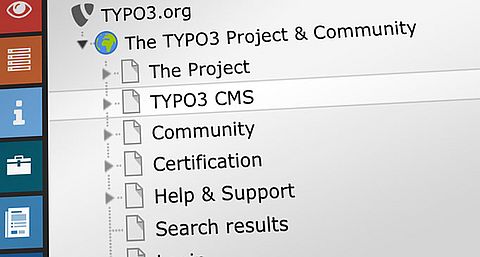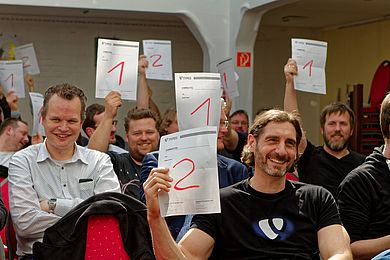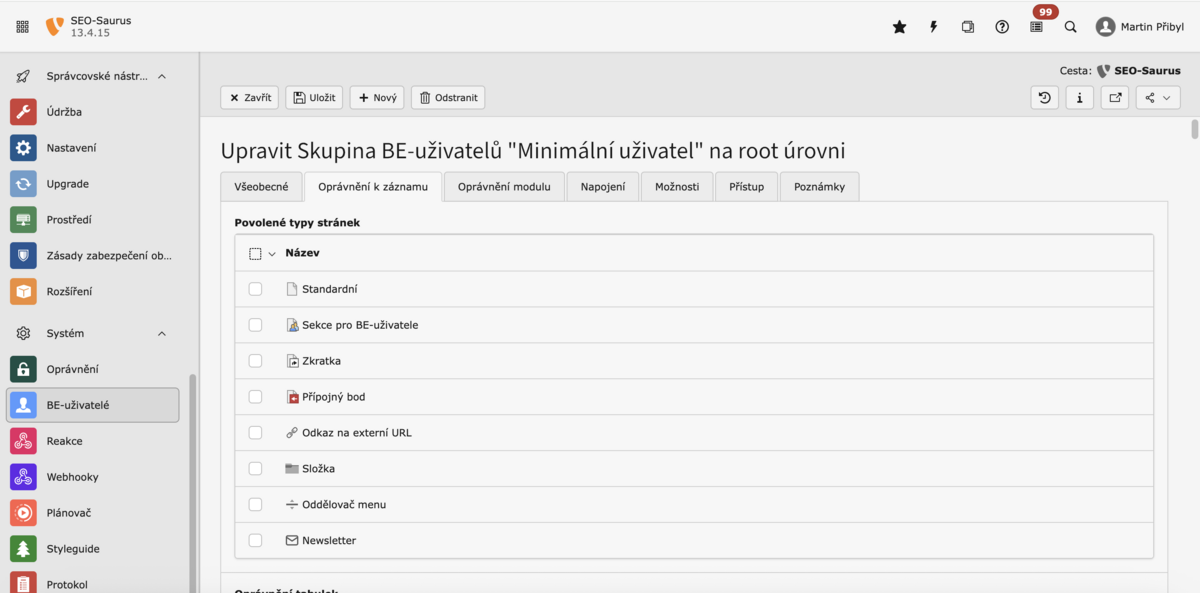I’ve been working actively with TYPO3 for around seven years, but I never imagined I’d one day have my fingerprints on almost every word of its user interface. In the Czech Republic, there used to be an active TYPO3 community before I joined the scene, but when I started, it felt like searching for fossils of Czech TYPO3 developers.
Everything changed when one of my personal projects reached people who didn’t speak English. I had to download the Czech language package — and to my surprise, there were barely any translations. Maybe one or two words here and there.
Around the same time, an article appeared about TYPO3 Core translations and an initiative to translate as much as possible before the v13 release. It explained the translation process through the Crowdin platform. Out of curiosity, I logged in and saw that Czech had around 10,000 translated words out of the total 79,500 — but most of them were from the outdated v9 version. That’s when the game slowly began for me.
The Vienna Boost
The real boost came in October 2024, after attending TYPO3 Camp Vienna. One of the sessions, led by Peter Kraume and Abdulhamid Kwieder, was entirely about the translation of labels in the TYPO3 backend and TYPO3 extensions.
Abdulhamid’s story was inspiring: he had single-handedly translated the entire TYPO3 Core into Arabic. His dedication motivated me to think, “We must have a complete Czech translation too!”
As an extra bonus, Peter made me a proofreader for Czech, allowing me to approve existing suggestions so they could be merged into the Core. That small trust meant a lot — and fueled my motivation.
Finding My Rhythm
I built a routine: whenever I worked from home, I’d open my laptop one or two hours earlier and just go through Crowdin translations. I started with the main branch, then worked from the newest TYPO3 versions back to the oldest.
Here’s my first big tip for anyone doing this: start with the glossary! It’s the most boring part, because you don’t see any immediate results, but it makes translations much easier later. Crowdin is a powerful tool that suggests translations based on the glossary. The more you teach it, the more accurate and helpful its suggestions become.
After a month or two, I started to see my translations appearing in my test projects. That progress gave me the energy to continue. The TYPO3 community was also a huge motivator — whenever I shared a milestone in TYPO3 Slack, the responses were heartwarming.
And whenever I had doubts, the Slack translation channel was just a message away. Once, I noticed my new translations weren’t appearing in the backend. At first I thought I was doing something wrong, but thanks to the TYPO3 Localization Team, we discovered it was due to a change in version branching. They fixed it quickly, and I could continue.
A Czech Connection
Around December 2024, I finally met someone with the same goal as me — Tom Novotný. He was the first Czech (living in Germany) TYPO3 developer I had ever met. His enthusiasm for building a Czech TYPO3 community added another stone to the foundation of my motivation to complete the translation.
It’s always great when you can share progress in regular calls. It creates a kind of responsibility — even if you’re short on time or not in the mood, you feel driven to make at least a little progress before the next call. That accountability made a real difference.
How I Translate
I’m not the strongest English speaker, but I’m creative with Czech. My process usually went like this:
- Read the phrase.
- Check Crowdin’s suggestion.
- Sometimes check DeepL’s suggestion too.
About 60% of the time, I could use the suggestion as-is. The rest required manual adaptation. The real challenge came with TYPO3-specific terms. For example, TypoScript should stay as-is, but the List module couldn’t simply be List in Czech — we needed something closer to Entries to avoid confusion.
Sometimes I used the Crowdin (crowdin) TYPO3 extension to see how translations looked directly in TYPO3. It was incredibly useful for checking context.
The Final Stretch
The last part — finishing the glossary — wasn’t much fun. I still had 4,000 words left, but each string was just one or two words. The good news was that most of the glossary terms were straightforward, and Crowdin’s suggestions often matched perfectly.
When I finally reached the end, I had translated 67,727 words and approved 68,379 — almost the entire TYPO3 Core in Czech.
It’s been a long journey since April 2024, with the biggest push after TYPO3Camp Vienna. And honestly? Seeing TYPO3 fully functional in Czech is one of the most rewarding things I’ve done in my time with the CMS.
To anyone thinking about translating TYPO3 into their own language:
- Start with the glossary
- Find a routine
- Don’t be afraid to ask for help,
- Let the community cheer you on
It’s worth it!
Statistics
- Translated Words: 67,727 (me) / 79,486 (total)
- Approved Words: 68,379 (me) / 79,486 (total)
- Started: April 2024
- Finished: August 2025





